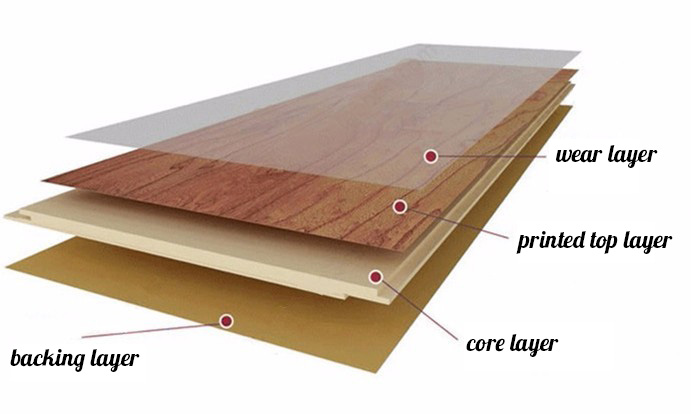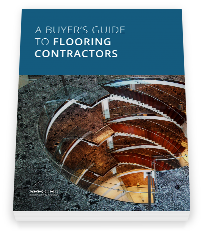WPC Flooring
Since its unveiling at a major flooring conference a few years ago, WPC has vastly become a rising star in the world of commercial flooring. Short for wood plastic composite, WPC offers facilities a wood resembling solution that is unlike anything we have ever seen. To get more familiar with WPC flooring, let’s get started by putting few answers to some important questions.
What is WPC Flooring?
Although the ‘W’ in WPC stands for wood, this type of flooring doesn’t actually contain wood in the traditional sense. It is, however, a composite material that is made up of a combination of wood flour or fibers and heated thermoplastic resins. Together, these materials surpass other conventional types of flooring pertaining to care, durability, and water resistance. WPC is typically comprised of the following four layers:
Wear Layer
As seen in traditional vinyl flooring, this layer is designed to protect your flooring surface from dents, scuffs, and scratches.  Available in different ranges of thickness, the thicker the wear layer, the more durable your flooring will be.
Available in different ranges of thickness, the thicker the wear layer, the more durable your flooring will be.
Printed Top Layer
This layer is where the ‘W’ in WPC gets its credibility. By using 3D printing technology, the printed top layer adds depth and realism that one might see in classic hardwood floors.
Core Layer
The core layer is where you get the most bang for your buck. Here, you will find a high density, yet stable waterproof center that will not expand, contract, swell, or peel when faced with liquid, standing water, or any other form of moisture.
Backing Layer
Otherwise known as the flooring’s backbone, this layer provides your planks with added sound installation, as well as being naturally resistant to mold and mildew.
Trends in commercial flooring
Learn the latest in flooring materials, design and decision-making frameworks so you can select the best floor for your facility.
WPC Flooring Benefit
- Real wood look
- Unique design options
- Easy installation
- Durable and long-lasting
- Dimensionally stable
- Waterproof
- Easy to care for and maintain
WPC Flooring vs Laminate Flooring
One distinct advantage that WPC has over laminate is that WPC flooring is 100% waterproof. This means that it can be installed in places that laminate should not—typically in spaces such as commercial bathrooms, commercial kitchens, and areas below ground level. However, if laminate is still something you want to incorporate within your facility, check out our page on waterproof laminate flooring.
WPC Flooring vs LVT Flooring
When taking a look at WPC vs LVT, things get a bit more complicated. This is due to WPC often being marketed as an enhanced version of LVT. While both do have moisture resistance qualities, WPC is not a vinyl product. The main differences between the two are that WPC is completely waterproof and can easily hide subfloor imperfections better than traditional vinyl floors due to its rigid core construction.
 WPC Cost Discussion
WPC Cost Discussion
Wood Plastic Composite flooring is a highly cost-effective solution, as it limits up-front costs when compared to other traditional flooring materials. Installed properly, WPC can provide solid, long-term value due to its unique durability and vital protection. If you believe that your facility could benefit from the installation of WPC flooring, our professionals can help you select the best materials for your budget, design, vision, and facility environment.

A buyer’s guide to commercial flooring
How to get the greatest-value floor and select the right contractor for your project.

 WPC Cost Discussion
WPC Cost Discussion